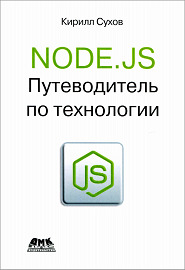Answer the question
In order to leave comments, you need to log in
Where to start learning JavaScript in the context of IoT, data and Node.js, and not front-end web applications?
I have never seriously dealt with any programming languages, but now I have become interested in the Internet of Things, and after reading many different articles on this topic, I decided that in parallel with Python, it makes sense to start learning JavaScript. That's just the vast majority of books / resources on JavaScript consider this language primarily in the context of front-end web applications, and I'm interested in the capabilities of Node.js, working with JSON, collecting and processing all sorts of data there. At the same time, all the books on Node.js that I have seen are geared towards the fact that a person already knows JavaScript, which, as I wrote earlier, most people learn in the context of web applications.
Actually, what is the question: where to start learning this language as a language as a whole, with the ability to move on to any Node.js, preferably bypassing the part with moving things on web pages (perhaps the most stereotypical use of this language)? Or is it still worth going down some other path?
Are there any good books? Resources? Ideally - both in Russian and in English.
Thank you!
Answer the question
In order to leave comments, you need to log in
well, Flanagan is a classic, what difference does it make in what context, JS is JS,
there are 5 books on Node in Russian, two are definitely worthy of attention

In the context of IoT, it makes sense to learn ASM, C, RTOS.
And your question, in the context of IoT, of course... Buy yourself a playstation and play minecraft.
IoT is marketing bullshit.
There is embeded, which merges data. Where and how - I don't care. If he needs to drain at all.
There is a backend that works with this data.
There is a frontend that creates the UI.
Well, not to be unfounded:
Part on AVR, part on ARM. Python server, frontend - angular. Construction is still going on and some of the modules are connected and disconnected in the process. The object is two buildings. The main channel is RS485. Part via radio, part via Wi-Fi, part via ethernet
Didn't find what you were looking for?
Ask your questionAsk a Question
731 491 924 answers to any question